Want some great ramen in Akihabara? Then head to this…karaoke joint?!?
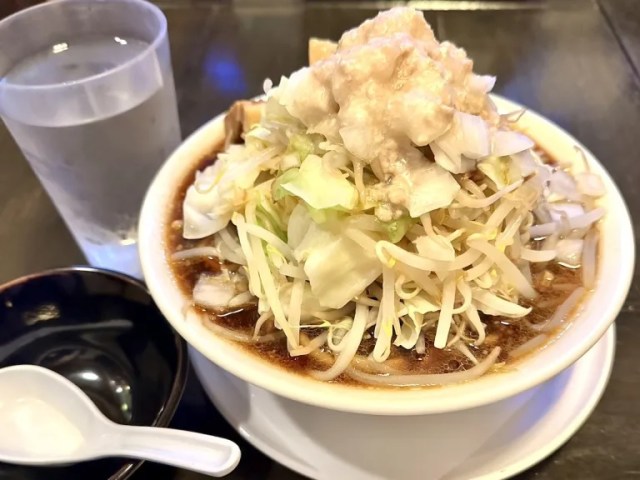
You can sing and eat your heart out with Ramen Paro.
When you’re craving noodles, instant ramen will get the job done in a pinch, but it’s really not in the same league as ramen that’s made from scratch. Making ramen from scratch, however, is time-consuming and difficult, so when you want the good stuff, you generally need to get out of the house/hotel and head to a ramen restaurant.
Or, alternatively, you could do what we recently did and head to a karaoke joint.
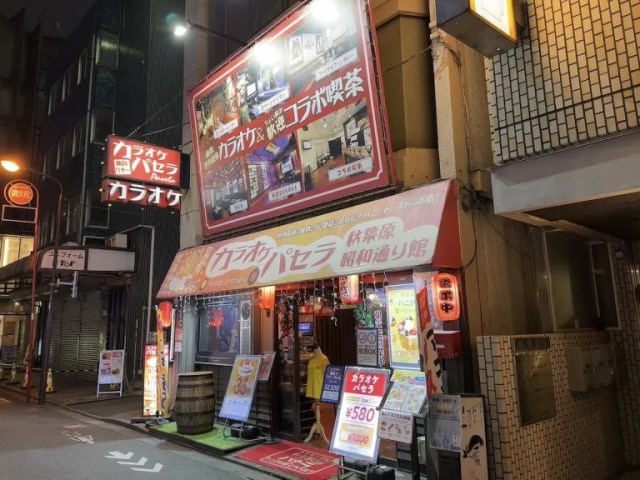
High-quality ramen isn’t something you can expect to find at most karaoke places, but then again, the Akihabara Showa-dori branch of karaoke chain Pasela (pictured above) in downtown Tokyo’s Akihabara neighborhood isn’t like most karaoke places. Being located in Tokyo’s otaku district, some of its karaoke rooms are occasionally decked out in special decorations as part of a cross-promotion with a popular anime or video game franchise, but even those that aren’t sport a very cool visual design, as many of them are retro-styled rooms made to look like something from Japan’s Showa period.
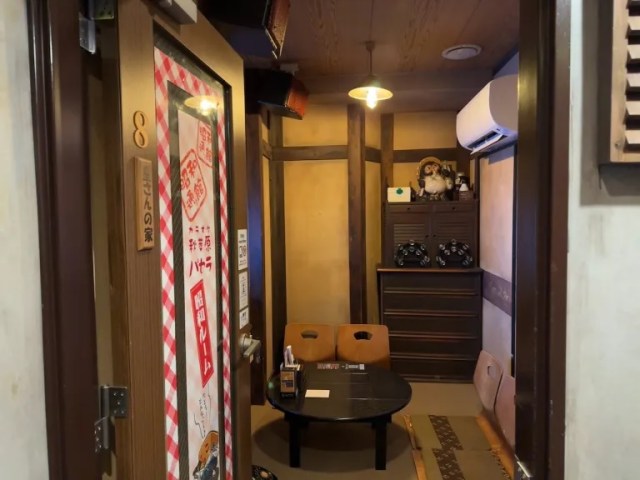
The Showa period ran from 1926 to 1989, but in the popular imagination the 1950, ‘60s, and ‘70s is the span that first springs to mind when people hear “Showa.”
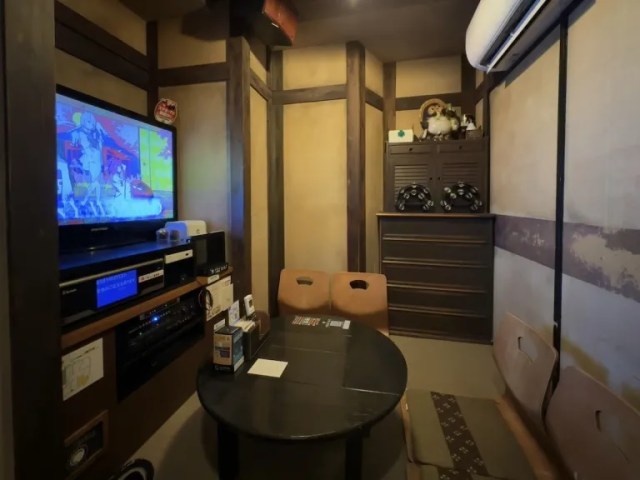
So while our room had amenities like a karaoke machine with a touchscreen control tablet and a modern heating/air conditioning unit, the rest of the vibe was thoroughly old school, with zaisu floor seats, a low chabudai tea table, and a corded rotary-dial phone.
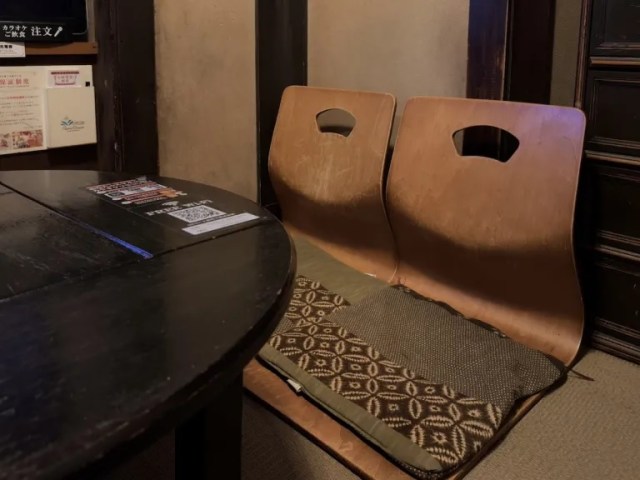
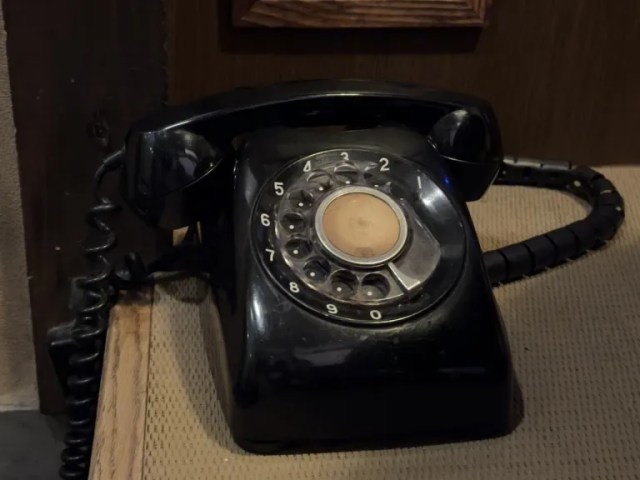
It’s not just the interior design that makes this place special, though. The Akihabara Showa-dori branch is the only Pasela location where the menu of food and drinks you can order from includes Ramen Paro ramen.
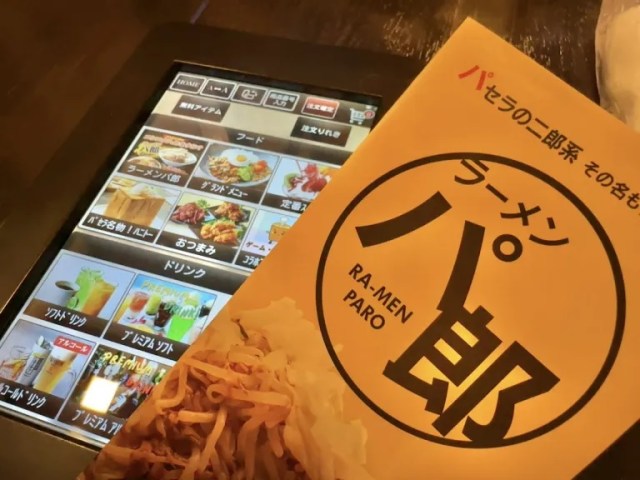
If that name reminds you of Ramen Jiro, that’s entirely by design, as Pasela’s noodles are of the genre that’s become known as “Jiro-style,” topped with tons of vegetables and meat and with a broth that’s extra-salty, extra-garlicy, and extra-oily.
Inside the Akihabara Showa-dori Pasela is a small counter where you can order Ramen Paro like you would at a regular restaurant, but it’s also available to order inside the karaoke rooms, which has several advantages. We’ll get into more of those later on, but for starters, ordering Paro Ramen from a karaoke room lets you pass the time while you’re waiting for your food by singing karaoke. Then came a knock at the door, and the staff brought in our Paro Ramen, setting it down on our table.
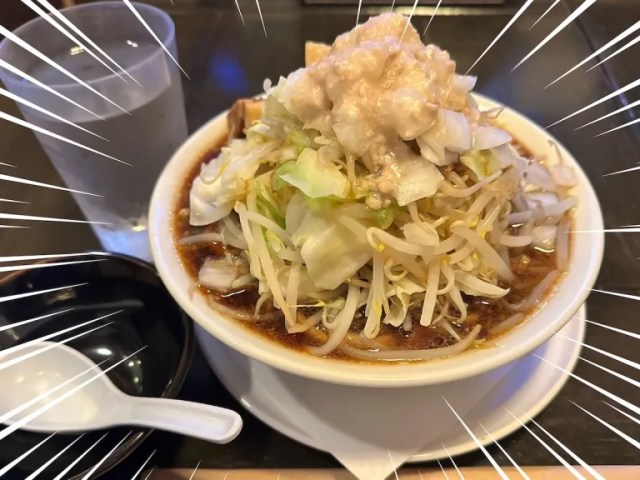
It was massive. Believe it or not, that’s the standard-size ramen, which costs 990 yen (US$6.50) but weighs in at a full kilogram (2.2 pounds) of noodles, toppings, and broth. There are also double, triple, and even larger-size portions available, for the truly hungry.
▼ It’s about 15 centimeters (5.9 inches) from the table to the toppings’ peak.
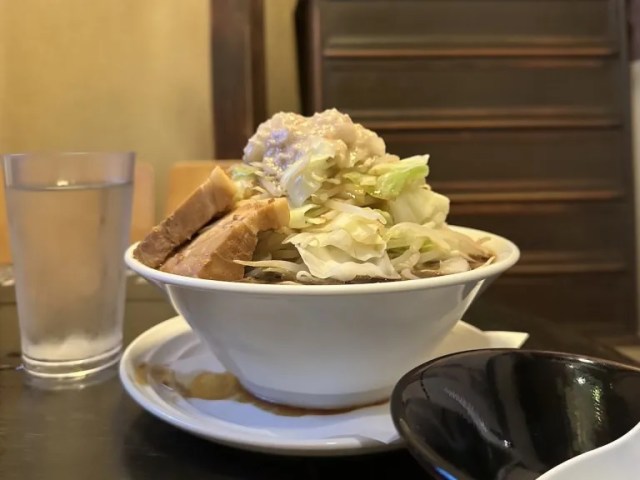

▼ Check out the incredibly thick slices of chashu pork.
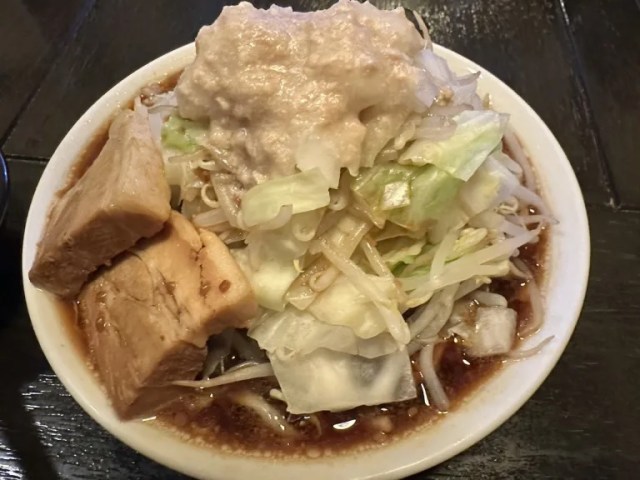
Ordinarily, you’re supposed to start a ramen tasting with a sip of broth, but we had so many toppings that we needed to eat some of them first in order to access the liquid underneath. We’d put the ratio of bean sprouts to cabbage at 7:3, but they were all crunchy and satisfying, as were the slices of onion that got picked up along with them as we worked our chopsticks.
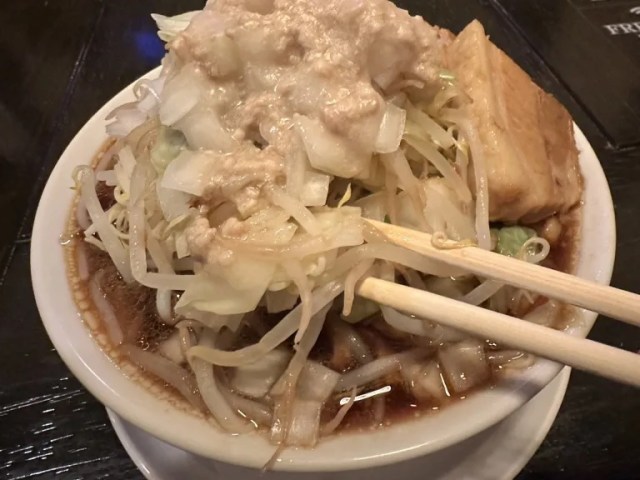
Taking care not to eat through the foundation and cause a topping avalanche, we next came to the noodles, of which there was also an amazing quantity. Paro Ramen’s noodles are very thick but still have good firmness, and they also have so much presence that we felt like they could be a meal in and of themselves.
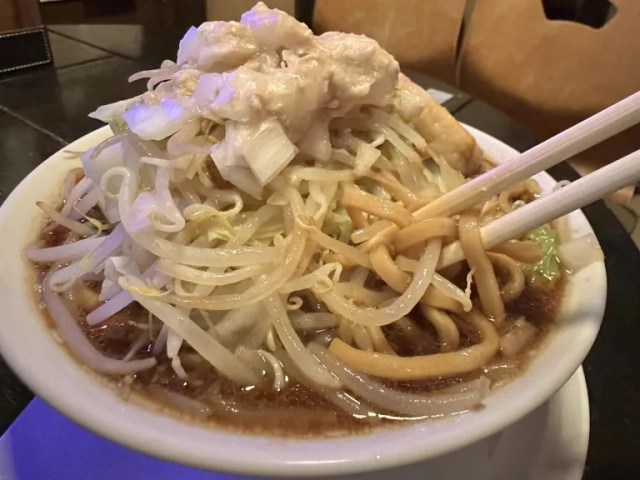
Now that we’d finally made it to the broth, we tasted it, and Ramen Paro’s string of successes continued. It’s a rich, soy sauce flavored ramen, with no hard edges to its flavor or odd odors, although, being an oily broth with garlic and onions, it doesn’t exactly smell like a garden of delicate blossoms. Basically, it smells like what you’d imagine it should, based on what it is, so if you like the way the broth ingredients taste, you’ll probably like how the broth smells.
And the chashu? Tender and succulent, easily breaking into pieces as we chewed like it was about to melt in our mouth.
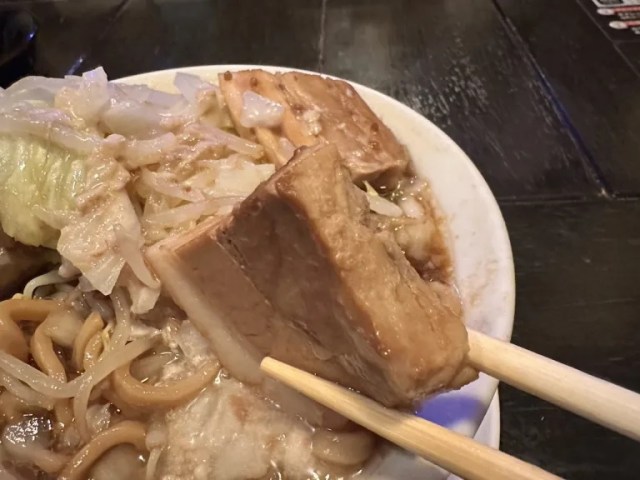
There is one small downside to eating Paro Ramen in a karaoke room instead of at the counter, which is, of course, that you have to pay for the room. However, having your own private room means you can eat at your own pace. At some ramen restaurants, particularly small ones with big fan bases, there’s a sense that there’s an unwritten rule that you’re supposed to eat your ramen and vacate your seat ASAP, since there are likely many customers waiting to get in. Having a private room means you don’t have to worry about that at all, which was a big plus for us since it wound up taking us close to 30 minutes to consume the massive portion.

Also, since you aren’t actually required to order food at Pasela’s karaoke rooms, splitting a bowl of ramen with a friend is A-OK, and pretty easy to do if you ask the staff to bring some torizara (sharing plates).
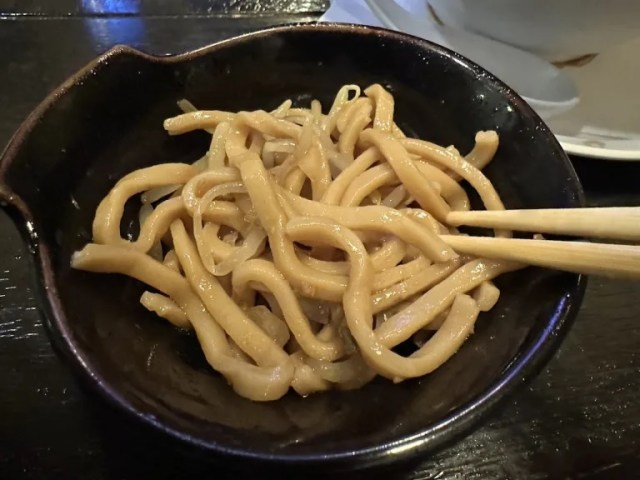
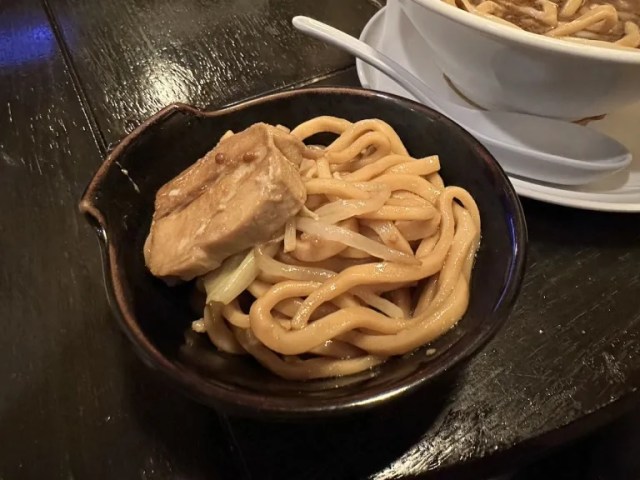
However, be warned that because of Paro Ramen’s high salt content, it can leave your throat feeling pretty dried out, so if you’re eating it in a karaoke room, you might want to do your hard-to-sing songs first, before you eat the ramen.
Location information
Ramen Paro / ラーメンパ郎
Located inside Karaoke Pasela (Akihabara Showa-dori branch) / 「カラオケパセラ (秋葉原昭和通り館)
Address: Tokyo-to, Chiyoda-ku, Kanada Sakumacho 2-10
東京都千代田区神田佐久間町2丁目10
Ramen Paro open 5 p.m.-5 a.m. (weekdays), 11 a.m.-5 a.m. (weekends, holidays)
Website
Related: Karaoke Pasela (Akihabara Showa-dori branch)
Photos ©SoraNews24
● Want to hear about SoraNews24’s latest articles as soon as they’re published? Follow us on Facebook and Twitter!
Credit:
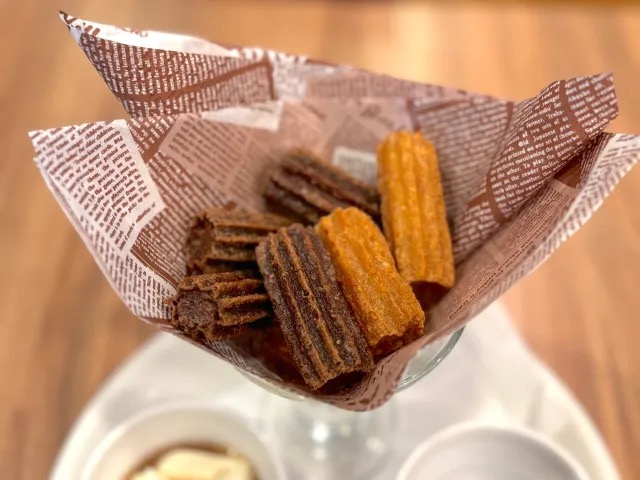
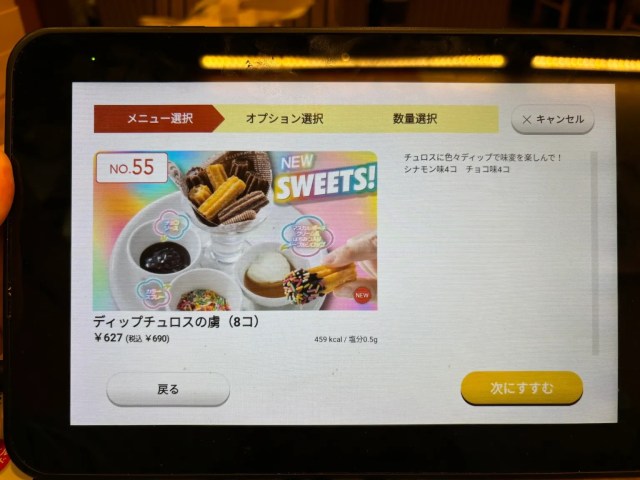

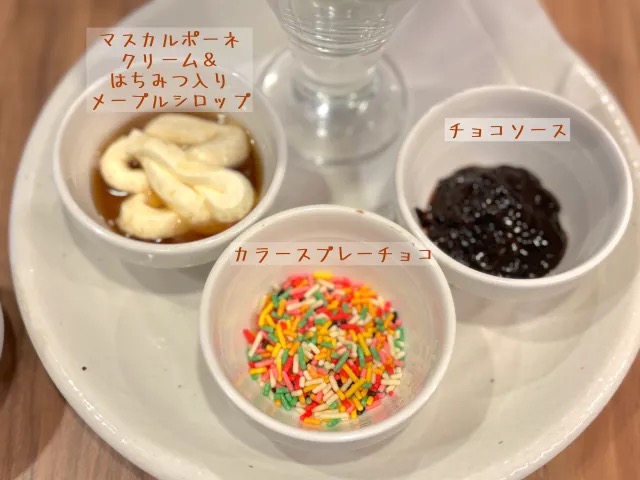
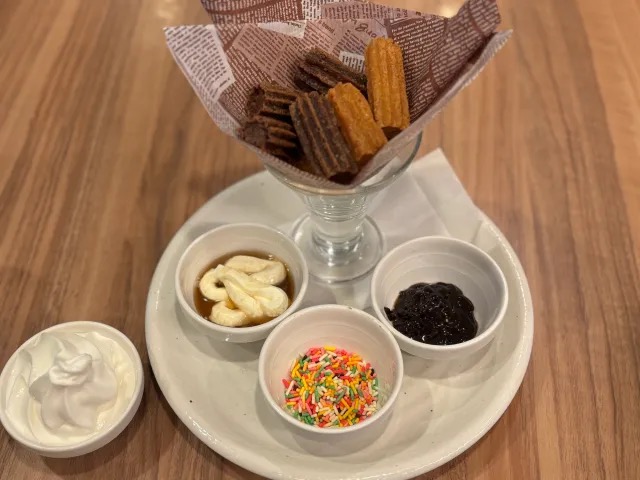
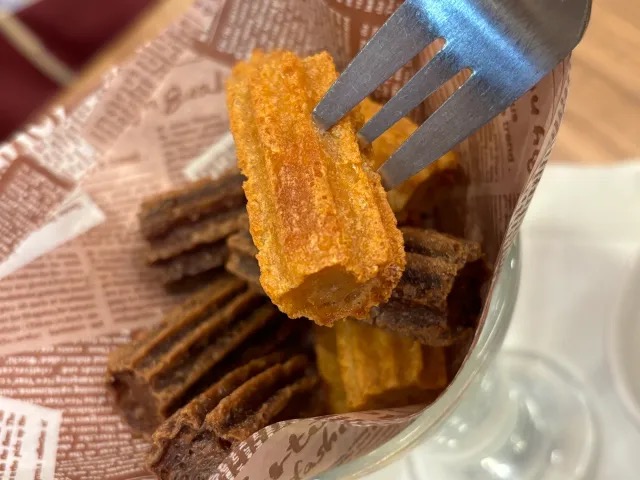
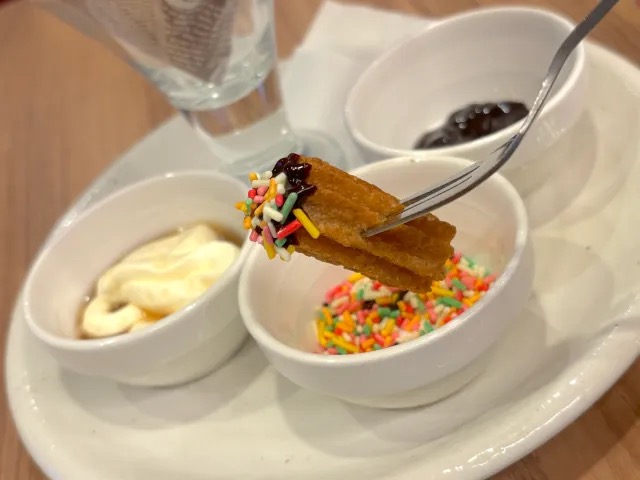
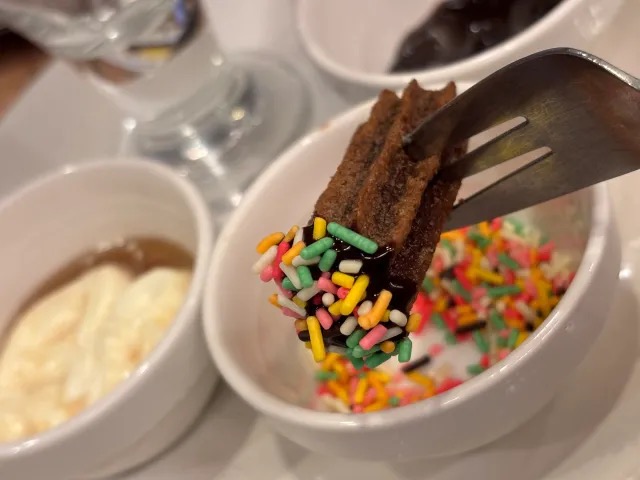
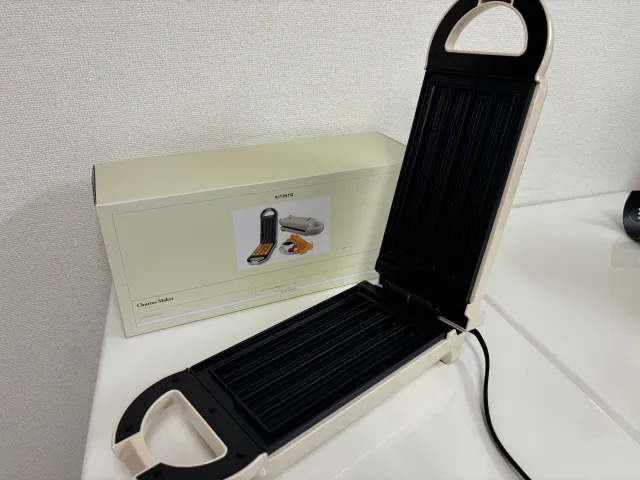
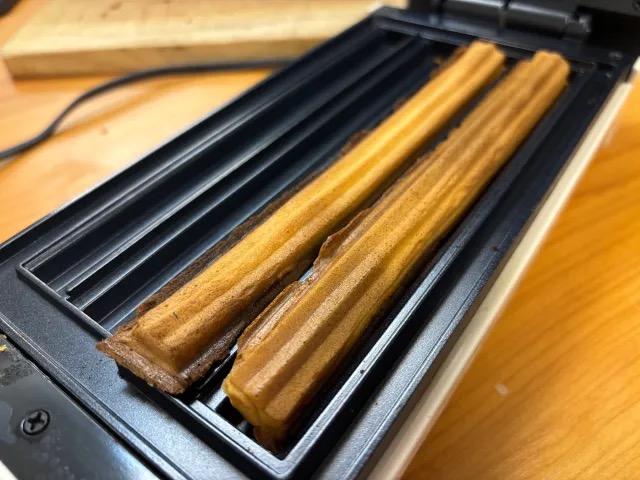
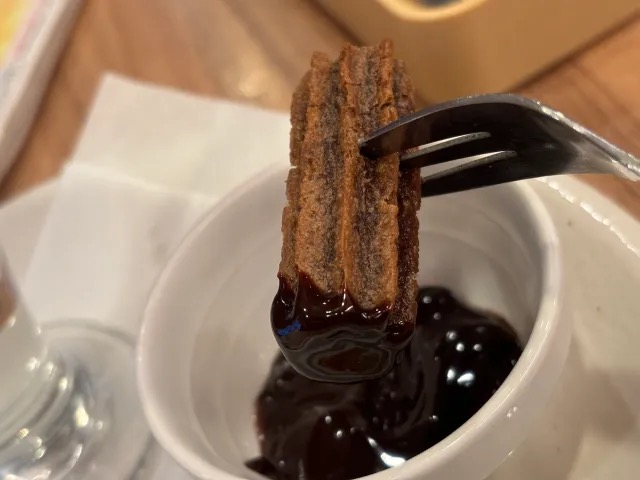

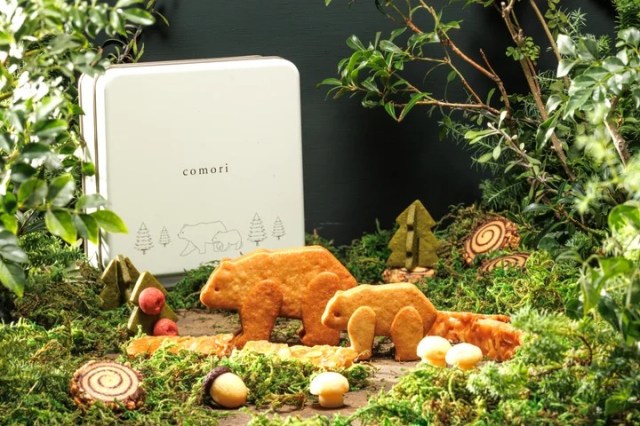
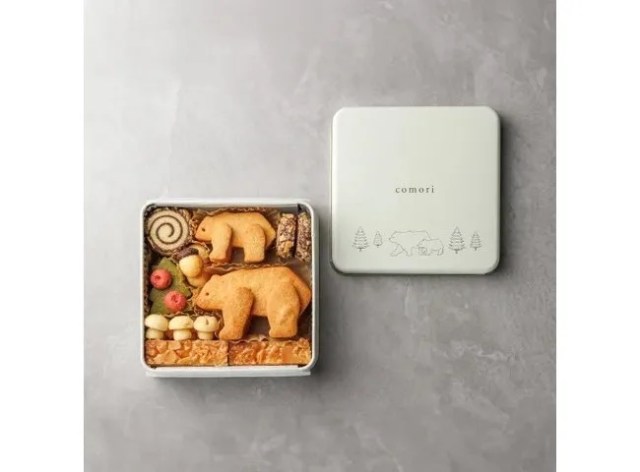
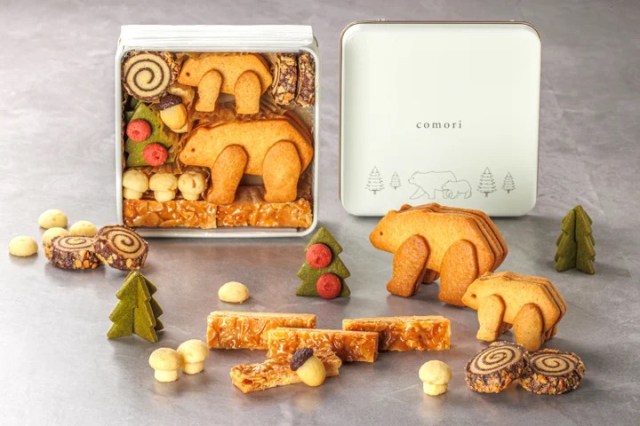

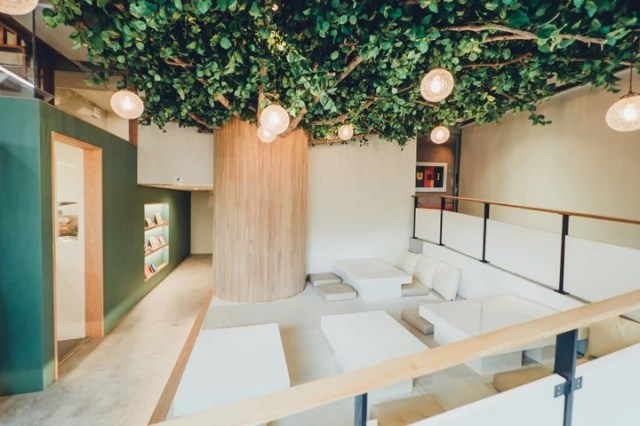
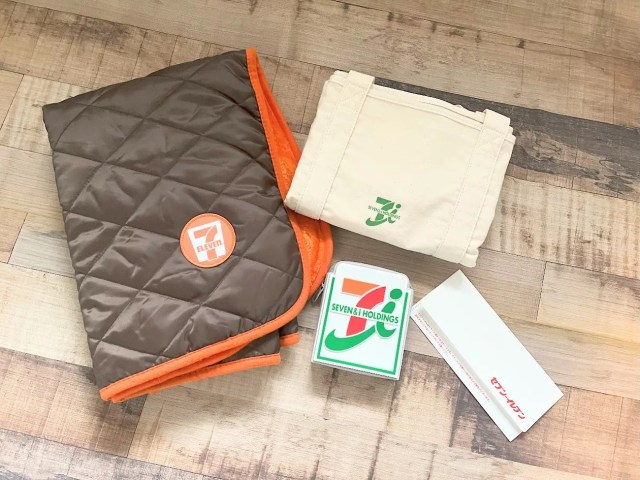
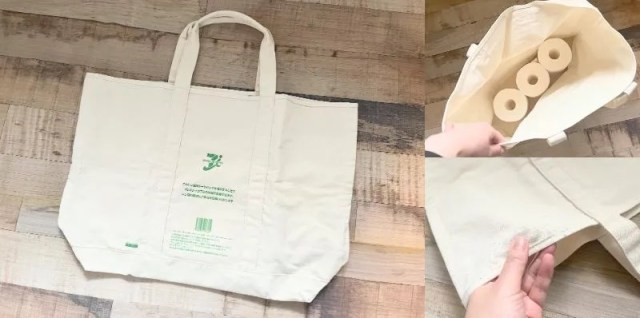
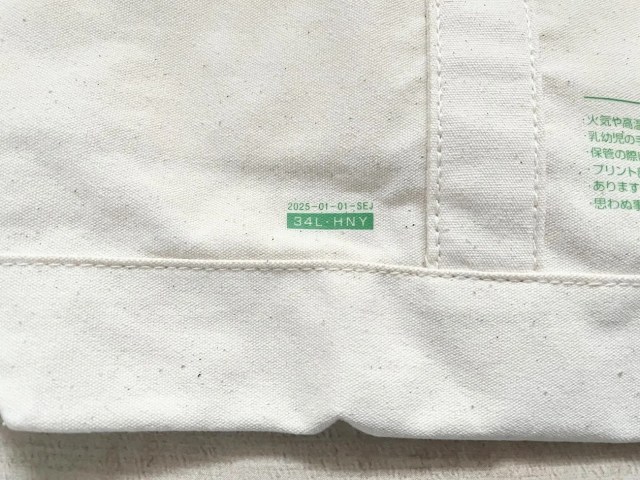
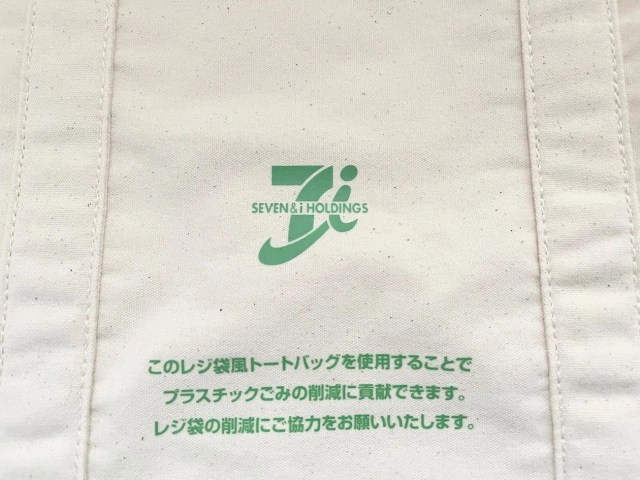


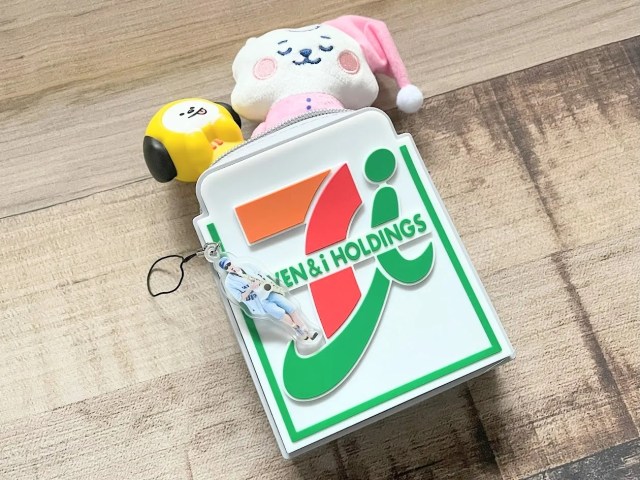
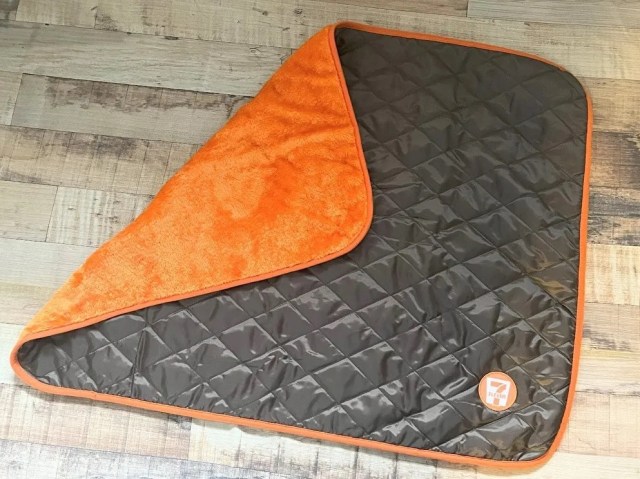
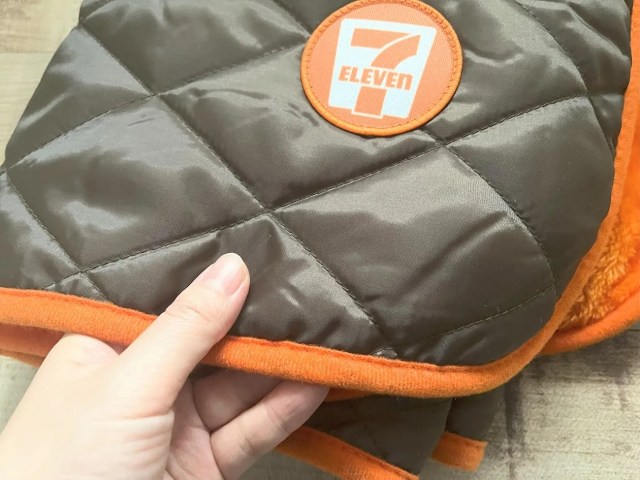
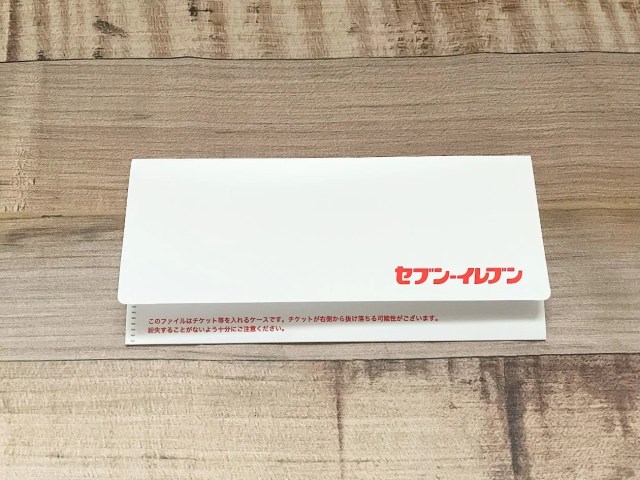
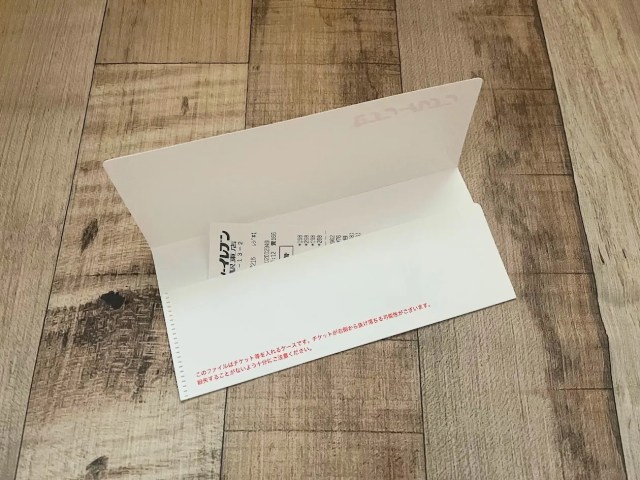
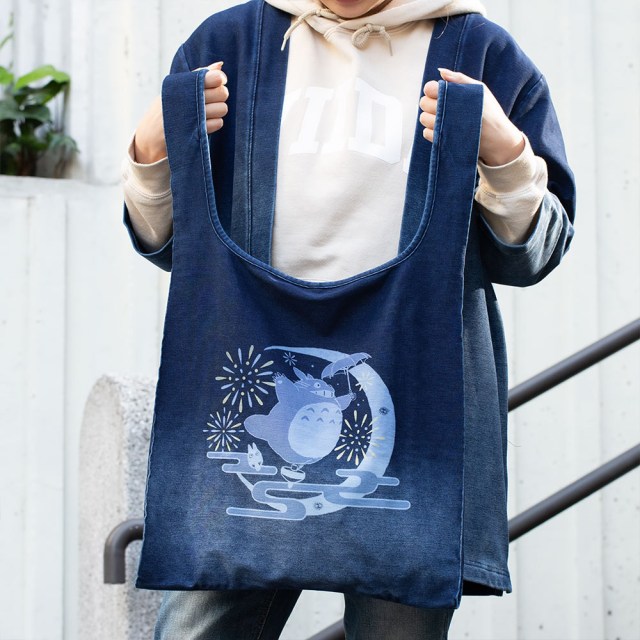
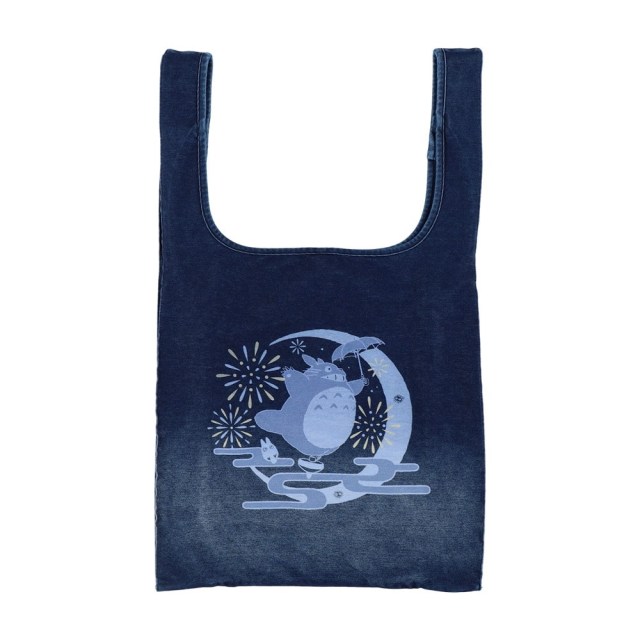
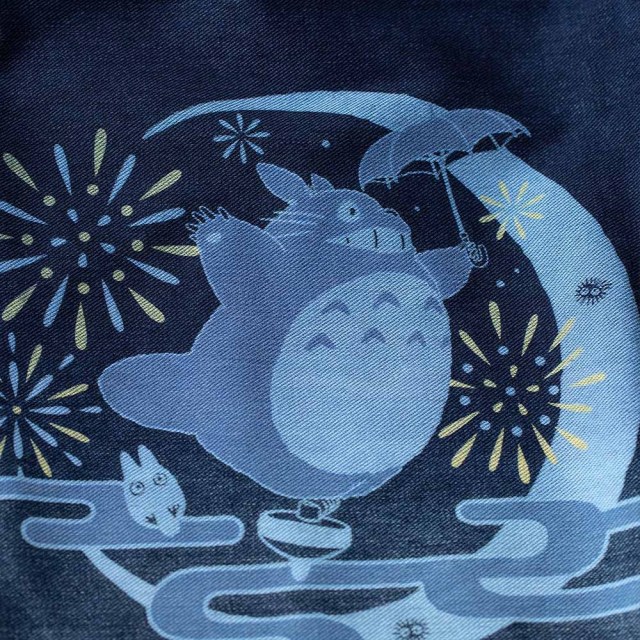

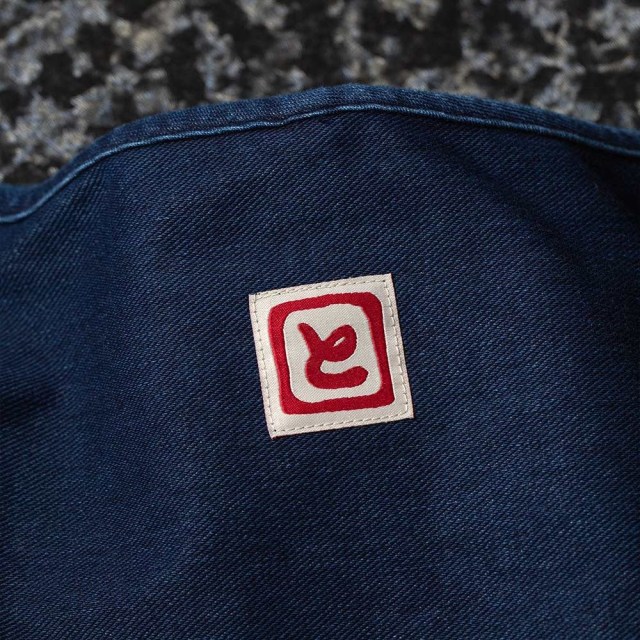
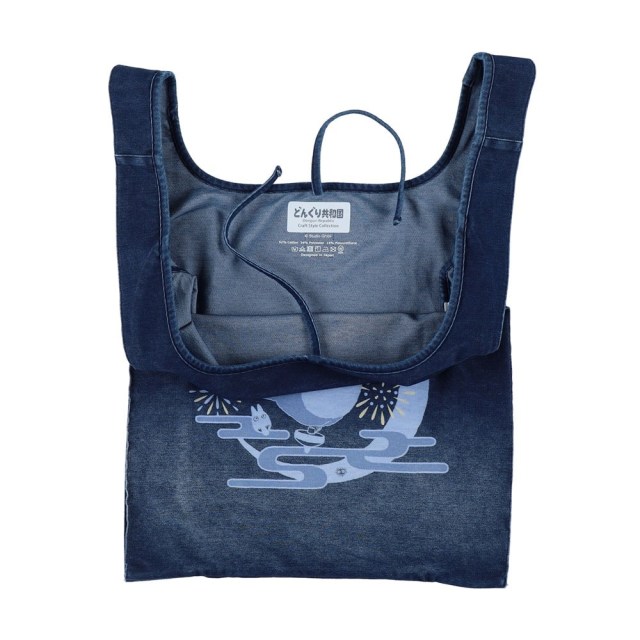

















0 comments: